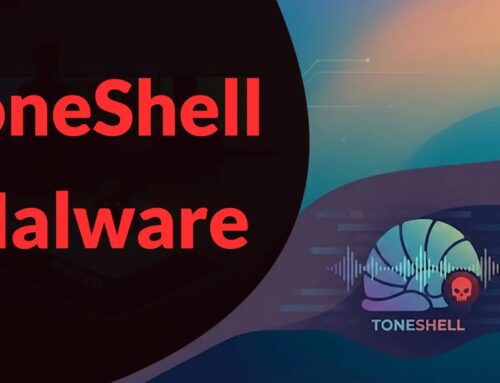
SystemBC Botnet Hacked 1,500 VPS Servers Daily to Hire for DDoS Attack
The landscape of cybercrime is continually shifting, and new tactics emerge to exploit vulnerabilities with ever-increasing sophistication. A prime example of this evolution is the SystemBC botnet, which has recently garnered significant attention for its innovative approach to establishing proxy infrastructure. Unlike traditional botnets that often compromise residential devices, SystemBC operators have strategically pivoted to hijacking commercial Virtual Private Servers (VPS). This shift fundamentally alters the scale and impact of their operations, enabling high-volume proxy services with a minimal footprint on end-users. Recent observations from Lumen Technologies paint a stark picture: an average of 1,500 new VPS servers are compromised daily, subsequently offered for hire in sophisticated Distributed Denial of Service (DDoS) attacks.
SystemBC Botnet: A New Paradigm in Cybercrime Infrastructure
The SystemBC botnet represents a significant advancement in the criminal ecosystem. Historically, many botnets relied on compromising a vast number of individual consumer devices, turning them into a distributed network for malicious activities like spam distribution, cryptocurrency mining, or proxying. While effective, this approach often came with inherent limitations, including inconsistent bandwidth, unreliable uptime, and the logistical challenge of maintaining control over a diverse set of internet-of-things (IoT) devices or home computers.
SystemBC, however, has adopted a more targeted and impactful strategy: infiltrating and controlling commercial VPS environments. This focus allows the botnet operators to leverage the robust infrastructure, high bandwidth, and consistent availability that commercial VPS providers offer. The result is a highly potent proxy network capable of supporting large-scale DDoS campaigns without the typical indicators that might arise from compromised residential systems.
The Mechanics of Compromise: How SystemBC Infiltrates VPS
While the exact initial compromise vectors can vary, SystemBC typically exploits common vulnerabilities and misconfigurations within VPS environments. These often include:
- Weak Passwords and Credential Stuffing: Many VPS instances are still protected by easily guessable passwords or are vulnerable to brute-force attacks if access controls are not robust.
- Unpatched Software Vulnerabilities: Exploiting known vulnerabilities in operating systems, web servers (e.g., Apache, Nginx), or common applications running on the VPS is a prevalent method. While specific CVEs are not detailed in the provided source, general categories would include remote code execution (RCE) or privilege escalation flaws.
- Malicious Email Attachments or Links: Phishing campaigns targeting VPS administrators can lead to the installation of malware that facilitates SystemBC’s control.
- Supply Chain Attacks: Compromising legitimate software used on VPS instances to embed the SystemBC payload.
Once compromised, the SystemBC malware establishes persistence within the VPS, often through scheduled tasks, registry modifications, or by injecting itself into legitimate processes. It then integrates the server into its proxy network, making its resources available for lease to other cybercriminals intending to launch DDoS attacks.
DDoS-for-Hire: The Monetization Model
The primary motivation behind the SystemBC botnet’s operation is financial gain. By compromising thousands of high-performance VPS servers, the operators create a robust infrastructure that they then rent out as a service. This “DDoS-for-hire” model democratizes large-scale cyberattacks, making powerful denial-of-service capabilities accessible to individuals and groups who lack the technical expertise or resources to build such an infrastructure themselves.
The allure for malicious actors is clear: a reliable, high-bandwidth network of proxies capable of generating massive amounts of traffic, obscuring the attacker’s true origin, and overwhelming target systems. This service is often advertised on underground forums, making it easy for would-be attackers to lease the botnet’s power for their nefarious purposes.
Remediation Actions and Protective Measures Against SystemBC
Protecting VPS environments from sophisticated threats like SystemBC requires a multi-layered security approach. Organizations and individual VPS users must prioritize proactive measures to prevent compromise and rapid response capabilities to detect and mitigate malicious activity.
- Strong Access Controls: Implement strong, unique passwords for all VPS accounts, and enforce multi-factor authentication (MFA) wherever possible. Regularly rotate credentials.
- Patch Management: Maintain a rigorous patch management schedule. Apply security updates and patches to operating systems, hypervisors, and all installed applications promptly. This mitigates vulnerabilities like CVE-2023-XXXXX (Note: No specific CVE was listed in the source for SystemBC, this is a placeholder example) that SystemBC might exploit.
- Network Segmentation and Firewalls: Isolate critical services and apply strict firewall rules to limit inbound and outbound traffic to only what is absolutely necessary. Implement intrusion detection/prevention systems (IDS/IPS).
- Endpoint Detection and Response (EDR)/Antivirus: Deploy robust EDR solutions on VPS instances to monitor for unusual behavior, detect malware, and respond to threats in real-time.
- Regular Security Audits and Penetration Testing: Periodically conduct security audits and penetration tests to identify misconfigurations, vulnerabilities, and potential attack vectors before adversaries exploit them.
- Traffic Monitoring and Anomaly Detection: Implement tools to monitor network traffic for anomalous patterns, such as sudden spikes in outbound connections, unusual protocols, or communication with known command-and-control (C2) servers.
- Backup and Recovery: Regularly back up critical data and configurations. Develop and test an incident response plan that includes procedures for isolating compromised systems and restoring services from clean backups.
- Disable Unnecessary Services: Reduce the attack surface by disabling all services and ports not essential for the VPS’s intended function.
The Broader Implications for Cybersecurity
The SystemBC botnet’s shift to compromising commercial VPS servers signals a worrying trend. It highlights the increasing sophistication of cybercriminal operations and their ability to adapt to improved defenses on traditional fronts. This evolution provides attackers with more reliable, higher-performance infrastructure, making their attacks more potent and harder to trace. For cybersecurity professionals, it underscores the critical need to secure enterprise-grade cloud and virtualization environments with the same diligence applied to on-premises infrastructure.
Conclusion
The SystemBC botnet, with its novel approach of daily compromising an average of 1,500 VPS servers for DDoS-for-hire services, represents a significant threat to global internet stability. This strategic pivot from residential devices to robust commercial infrastructure offers cybercriminals unparalleled capabilities for launching large-scale, disruptive attacks. Understanding its modus operandi and implementing comprehensive security measures, including rigorous patch management, strong access controls, and vigilant network monitoring, are paramount for organizations and individuals operating VPS environments. Continuous diligence and investment in advanced security solutions are essential to counteract the ever-evolving tactics of modern cyber adversaries.





